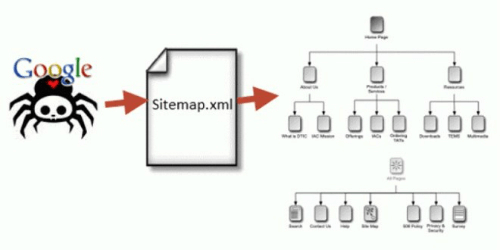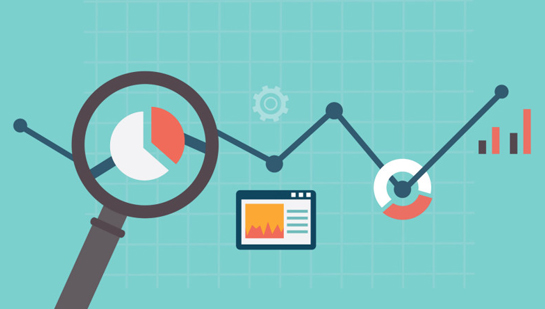The popular platform of WordPress has gradually outgrown its purpose. It has evolved as an impactful content management system while actually it was created as a blogging platform.
Table of Contents
According to an estimate, today it has more than fifty percent market share and at least twenty million websites built on it. One of the major reasons that people love using it is that all kinds of websites can be developed on its platform.
Irrespective of the kinds of plugins and themes that you use, optimization is always important for it. Without optimization, your website will be ignored by the search engines.
In this read, you will understand SEO and Content Management for WordPress. It will help you in ensuring that your site is not lost in the oblivion and meets its actual purpose.
Importance of Website Optimization
If you have been using the WordPress platform for some time then you will be aware that optimization is necessary. It will not work for you if you don’t ensure that it is optimized for search engines. All the SEO optimized websites stand a better chance to appear at the top of search results.
If you do not make it on the first page of the search result, then it is gradually heading towards death. It is unfortunate but it is the truth. Unless there is a deep query it is not possible that the users will move forward on the second page.
People usually feel that managing such tasks is like getting involved with a lot of technicalities. But it is not so, as all you have to do is follow the simple rules. When using the WordPress platform many technical things will be handled by plugins.
Other than that there are some proven tips that you can follow for SEO and Content Management for WordPress.
Tips for SEO and Content Management for WordPress
Visibility Settings
Your website can be hidden from search engines when you use WordPress. Before it becomes available to others you have to make necessary adjustments from a built-in option.
When you are in the development phase this can be the most useful feature. But if in case it is not modified it will create hectic issues for you. Your site will never be visible in search engines and you will lose organic traffic.
If you yourself cannot discover your website on the search results page it is highly recommended that you check for it. Navigate to the Reading option from the Settings menu and find the ‘Search Engine Visibility’ section.
Here uncheck the box titled “How to Stop Search Engines from Crawling a WordPress Website” and save changes.
Permalinks
Permalinks are an essential aspect of SEO and Content Management for WordPress. URLs of the posts and pages of your website in WordPress are Permalinks.
It is generally typed in the address bar by the audience to visit your pages. If it is linked to any element then it is accessed by the search engines.
By default, these permalinks are created by the WordPress platform and are often irrelevant. Most of the times they are unreadable and have day & name added to it. Keywords and titles are preferred by the search engines over such unsorted permalinks.
Navigate to the Common Settings option from the Settings menu. Different kinds of permalinks like the plain, month & name, numeric, and others can be chosen.
When you select the post name option it will enable you to add keywords to the URL. After modification remembers to redirect old posts if you have already shared or published them.
Sitemap
The list of all your pages is contained in a file that is termed as an XML sitemap. This makes it convenient for search engines to crawl into your website. It will not boost the rankings but will help in the quick discovery of your WebPages. This will help in immediate indexing and ranking of the page.
Different plugins like Google XML sitemaps and Google Search Console can be used to create such sitemaps. These set of tools will help you collect data and reports to understand the performance of search results and pages.
The first step will be to add your website and then navigate to the Sitemaps option from the Crawl menu. You will be able to check the first stats in a few hours after successful addition.
Focus Keyword
A keyword is an integral factor of SEO and Content Management for WordPress. The success of your content is largely dependent on the keywords. Rankings of the website are based directly upon the use of correct keywords.
It helps search engines understand the contents of the site. They should be used correctly and without overstuffing pages with them.
Relevant and well-researched content usually drives the best traffic. If there is a deficiency of keyword optimization then it will not perform well.
Thus relevant keywords are a must with researched content. You must make sure that you get rid of negative focus keywords from the comment section. Anti-spam plugins will help you carry out this task efficiently.
The location of the keyword is as important as its selection. The positioning is extremely essential hence place it in the first paragraph of the content or in the title.
If the crawlers find the keyword at the beginning itself it will be ranked high. You can depend on trusted plugins for suggestions on keyword density and other improvisations.
Quality Content
If you want your webpage and site to rank exceptionally well you have to include high-quality content that the audience is looking for. It should be appealing and free from all sorts of grammatical & factual errors.
Plagiarism of any kind will be immediately detected and is also punishable. Therefore it becomes your responsibility to ensure that the posted text is completely unique. The same topics can be written multiple times but it has to undergo a plagiarism check before it is published.
You have to make necessary provisions for sharing the blogs, articles, and information. If it is engaging, informative, and appealing to the audience they will share it on various platforms.
This will indirectly improve your reach and you will receive new organic traffic. This new traffic can be diverted to the older posts with the help of internal linking.
Image Optimization
Undoubtedly visual content has a higher hold compared to textual but it comes with a downside. It decreases the loading speed for a webpage.
Thus, image optimization is necessary for SEO and Content Management for WordPress. If you are not careful while selecting the size and quality of the images it will severely affect the loading speed.
For colorful images, it is recommended to use JPEG format. PNG should be used for transparent images and GIF for animation purpose.
Plugins will help you in image compression and it is advisable that you do so mandatorily. The SVG format is extremely lightweight and must be used for the website logo.
Along with the images ensure that you have used the descriptive titles and alt tags. This helps crawlers understand the content of your images.
It also helps individuals with visual impairments to grab the message of your image. When you upload the images you can easily add and edit tags in WordPress.
Internal Links
This is one of the most underrated elements in SEO and Content Management for WordPress. But surprisingly it is crucial and important. For rankings, pages on your website are scored through an enigmatic algorithm.
The authority of the page is demonstrated by the score. There is no concrete evidence by it is largely believed that internal linking helps in attaining the scores.
Thus, make it a practice to link at least your own content when making new posts. It is a good and promising habit for your webspace. A pre-published checklist can be provided if you are managing a multi-author blog.
This will boost the organic traffic reach of your website and older posts will receive a lot of fresh attention.
Short URLs
Well-structured websites are better ranked compared to mess up sites. Higher click-through rates and clean websites can be possible with short URLs.
By default, the WordPress platform will create a short URL but you can always go beyond and shorten them. It must not lose the uniqueness of this entire process.
Heading Tags
It is essential to use the tags properly but this simple fundamental is often neglected by most users. Sometimes individuals are confused about where to start from while using it.
There are six levels of tags from H1 – H6 each with a unique purpose. H1is for the title post, H2, H3 & H4 are subheading posts, and H5 & H6 can be used for further detailing.
Ensure that you have one H1 tag in your content and other H2 or H3 tags for additional headings for content improvisation.
Negative SEO
The last point is to be aware that SEO can be used against you by your competitors. This can damage the brand value of your organization and your reputation will be at stake.
Check for spam comments on your blog and irrelevant links on your website because they undermine the credibility. Always moderate your comment sections and check your backlinks to verify if they were actually created by you.





